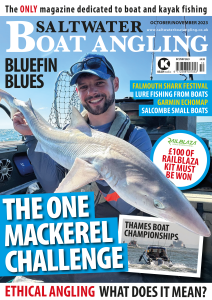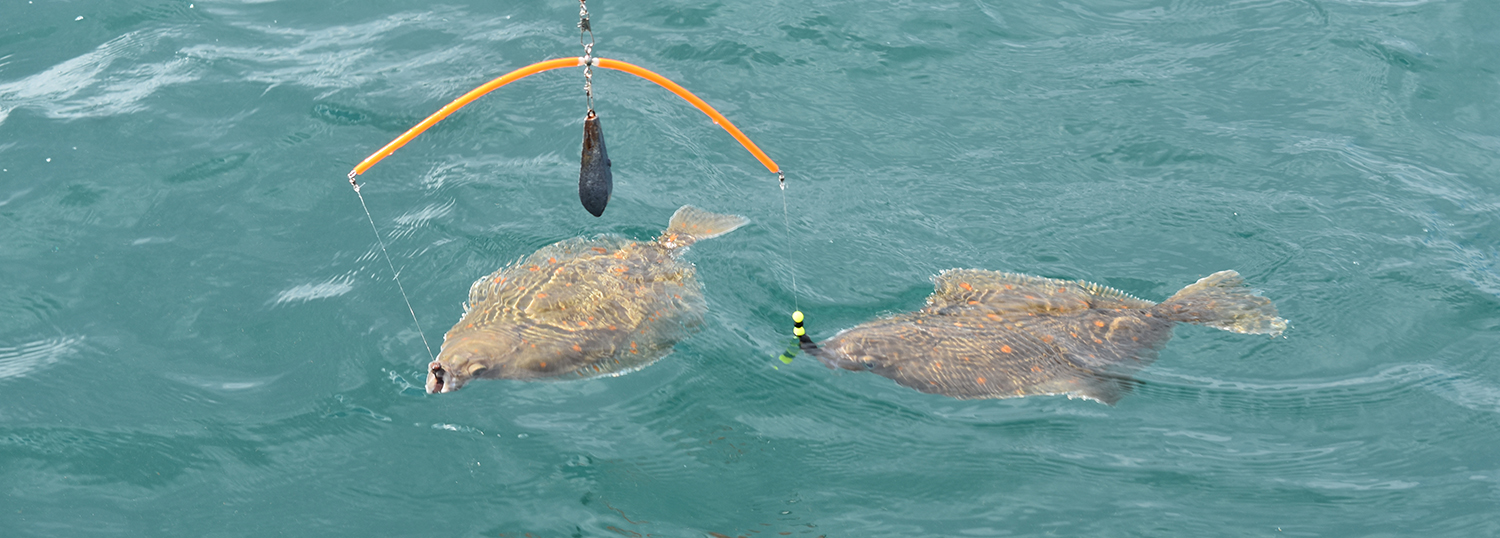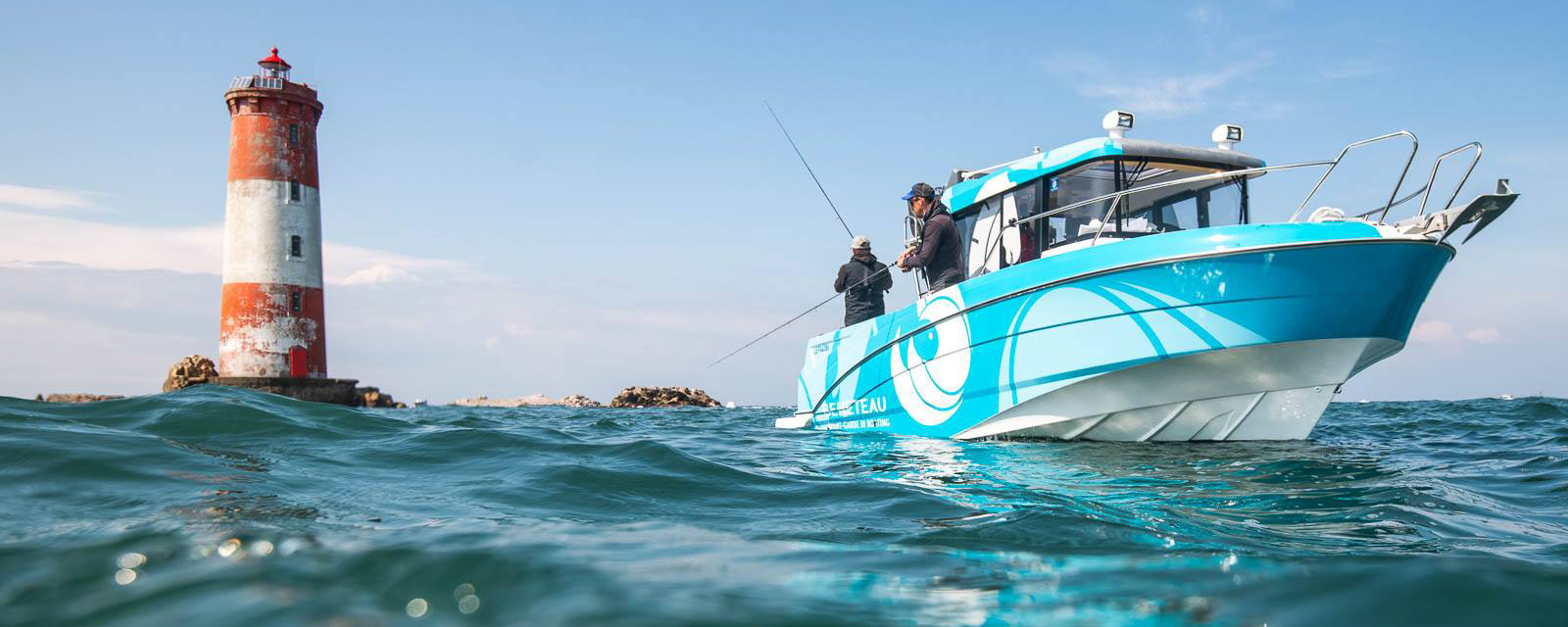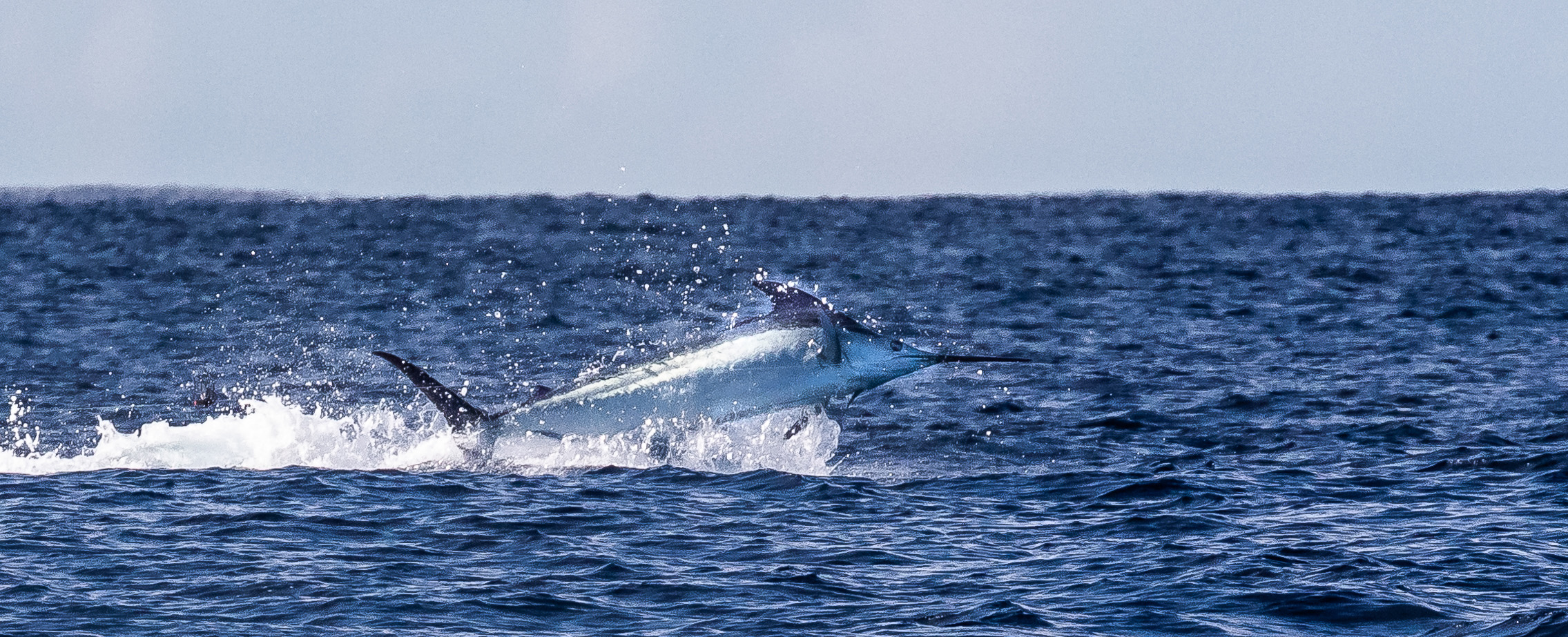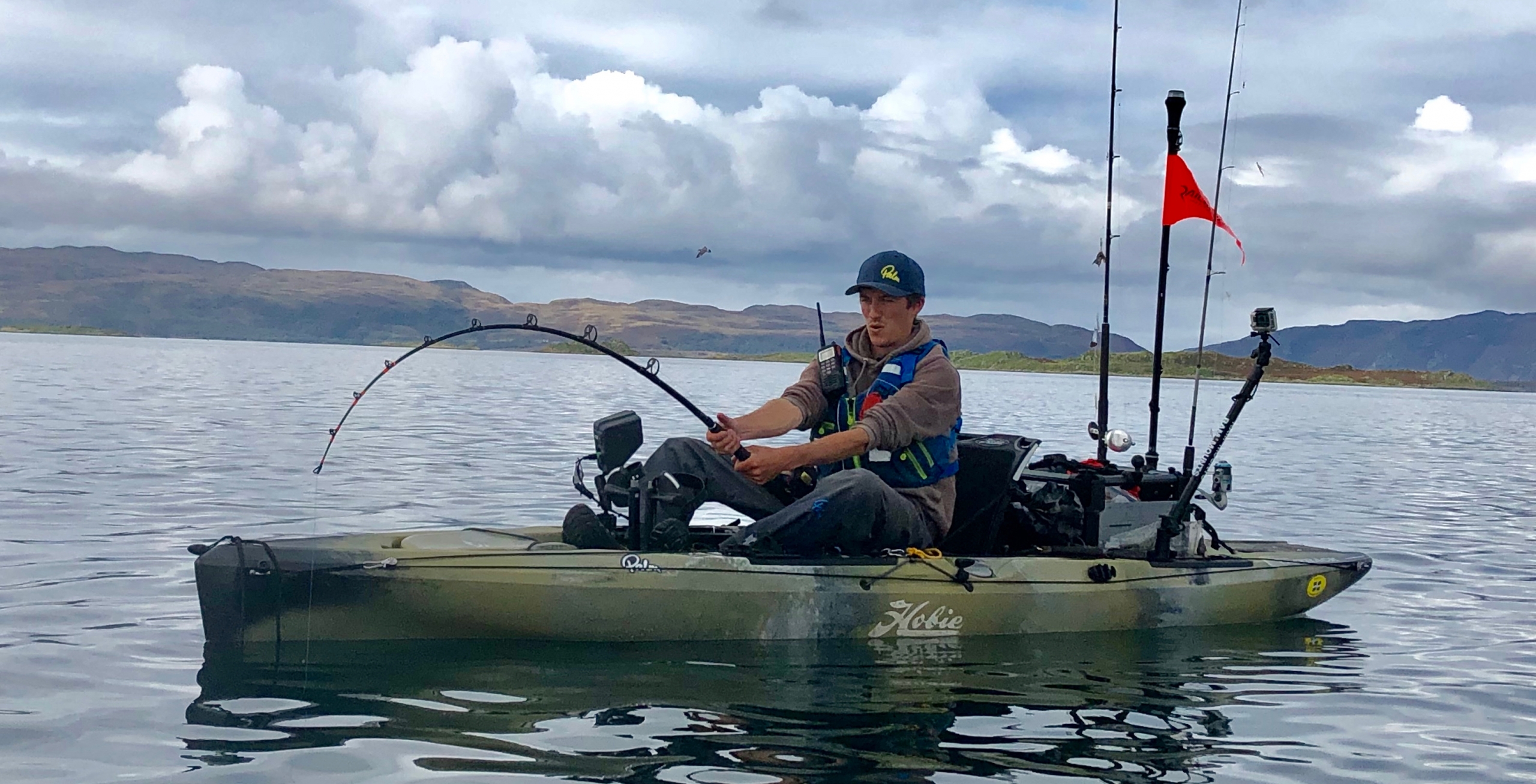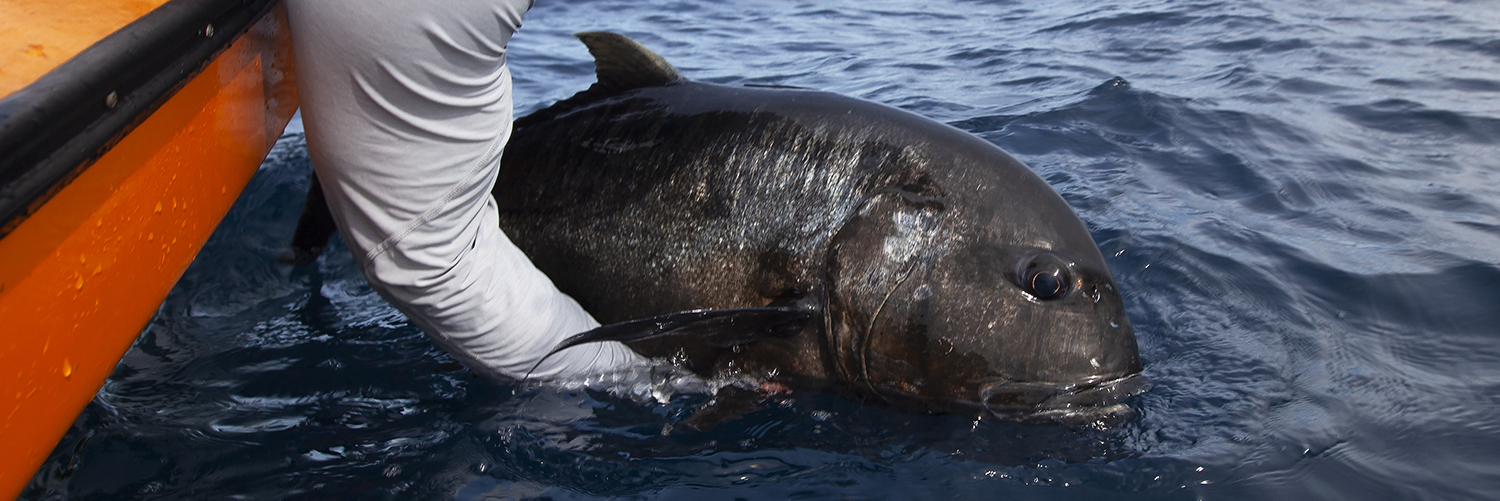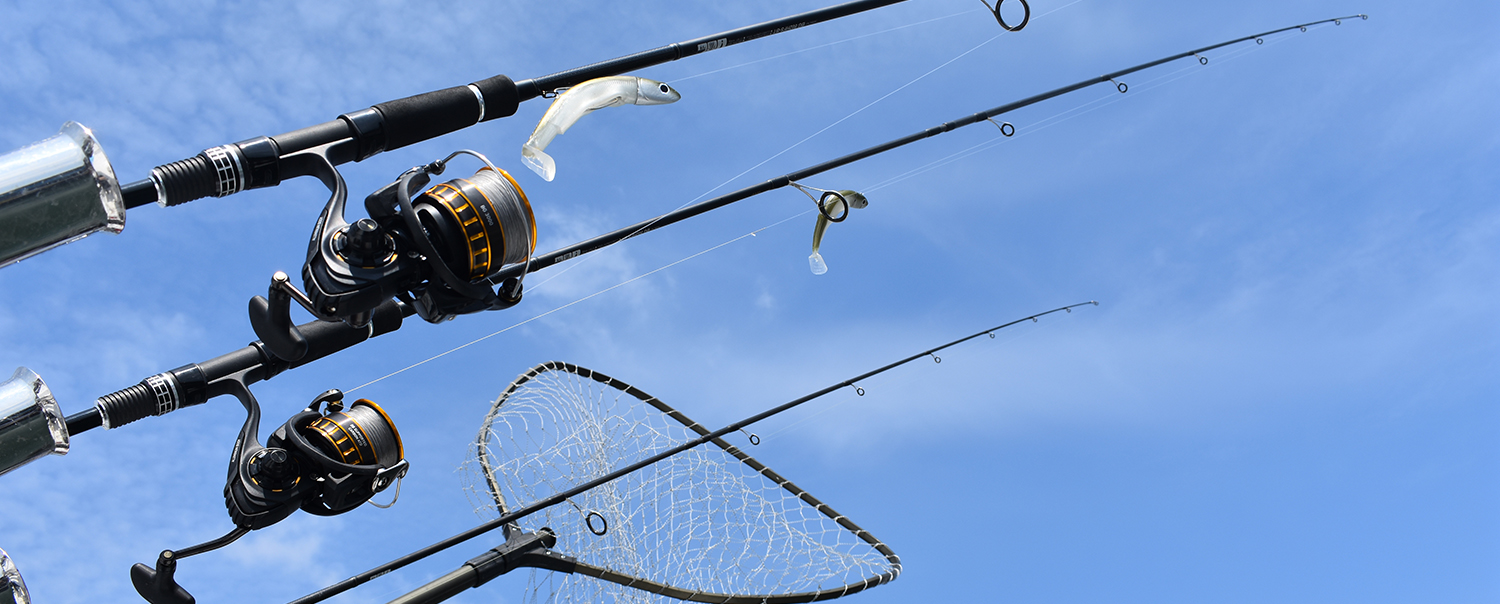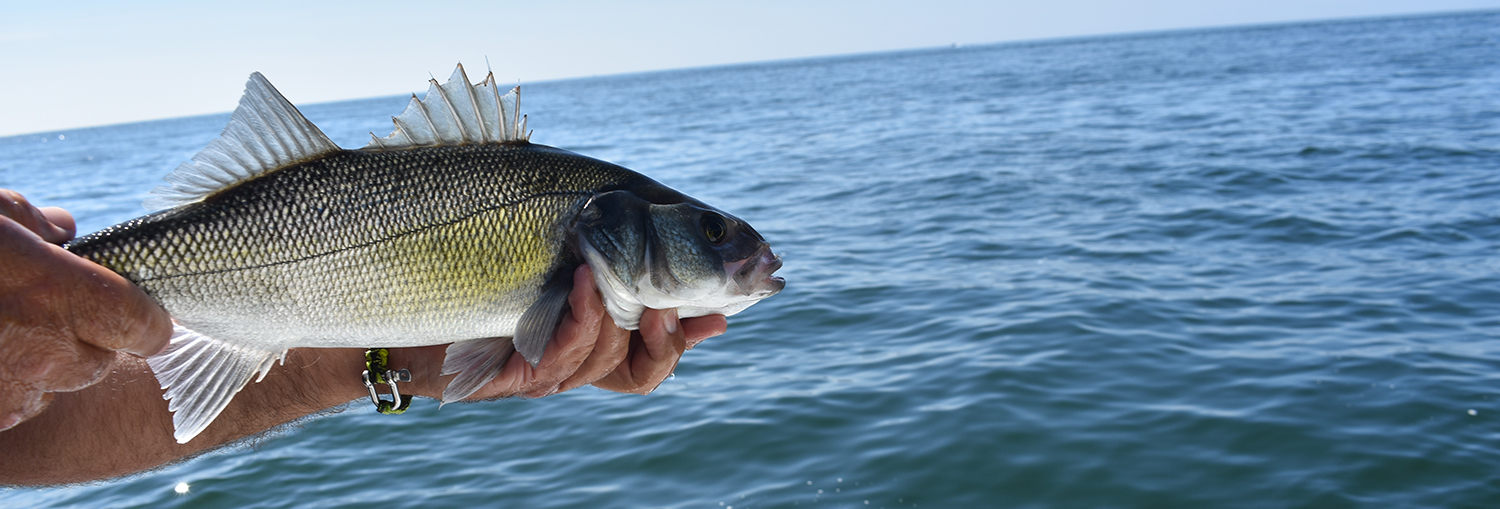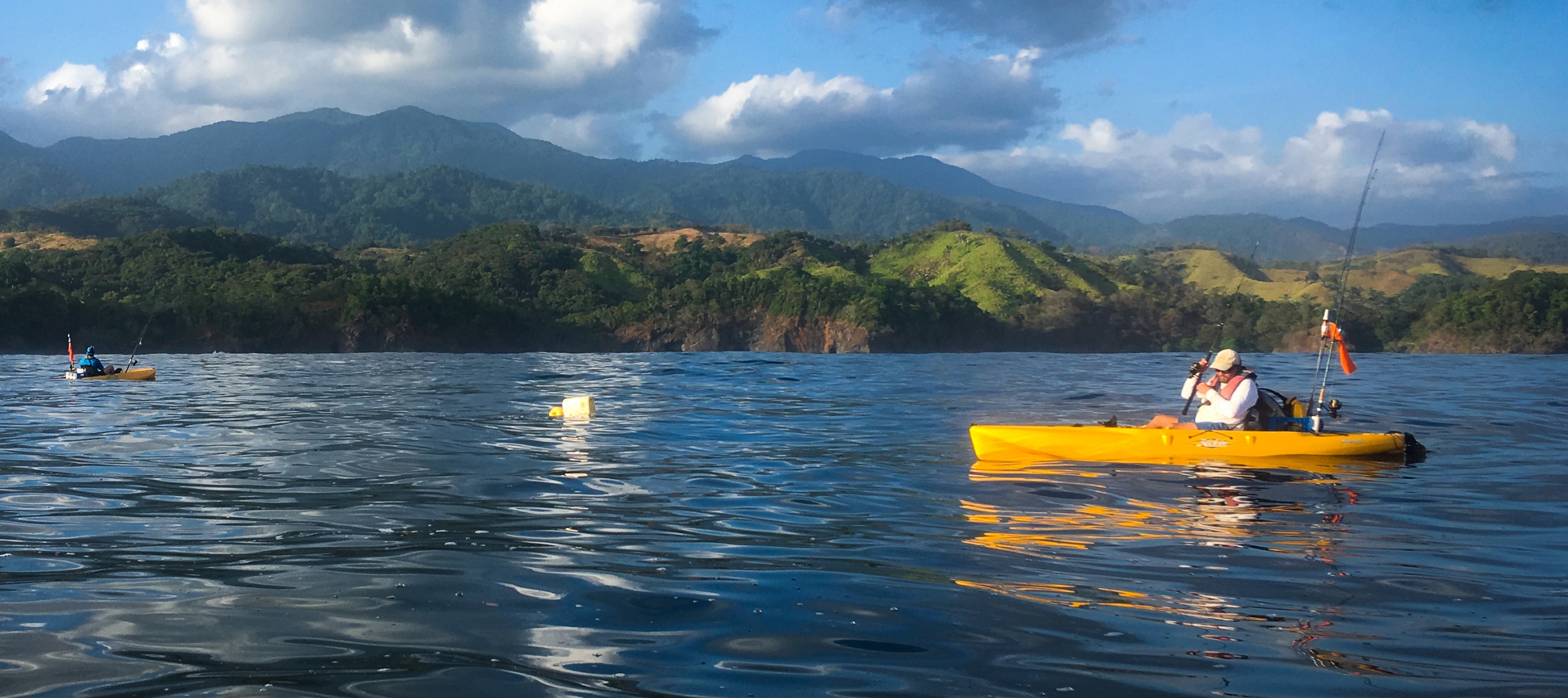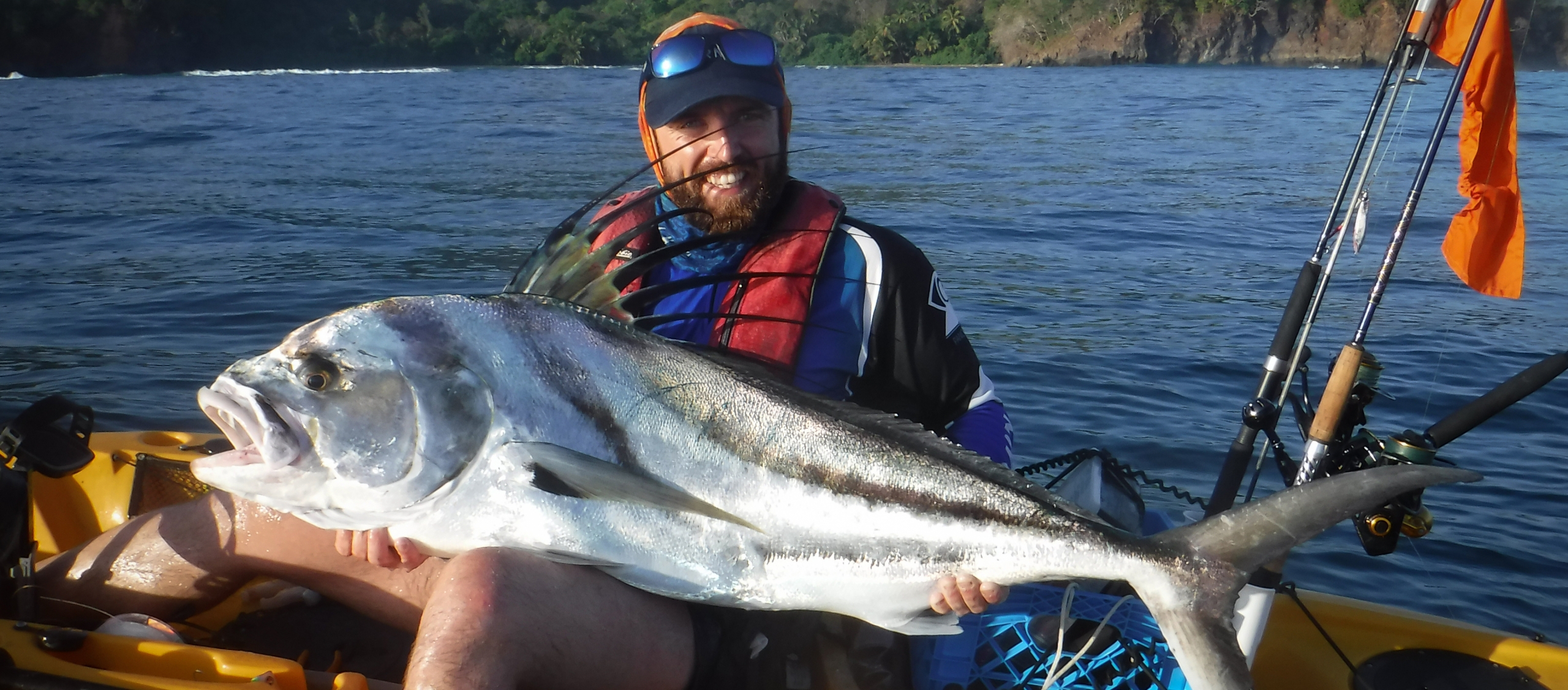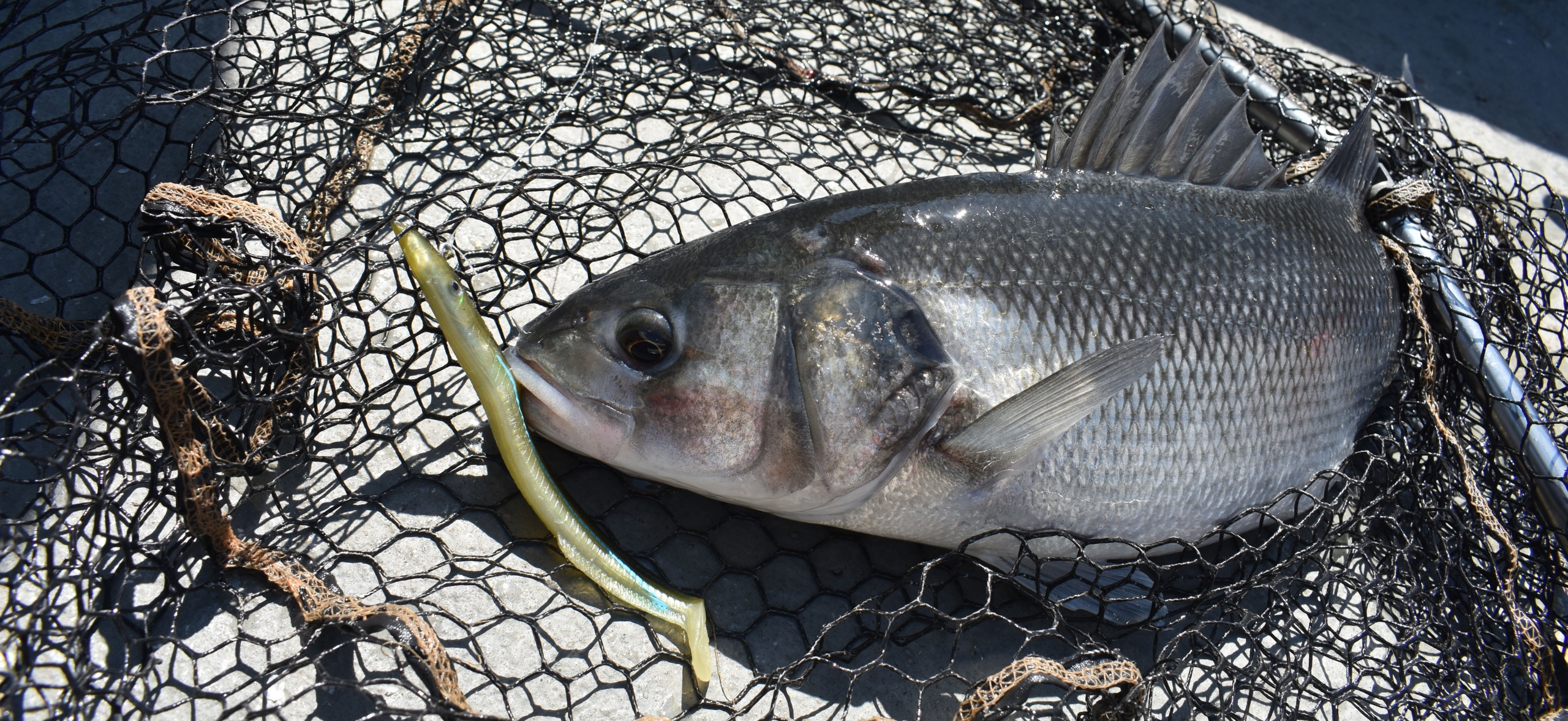The Alderney ring method was developed to help drive an anchor out of its position on the sea bed with the minimum of effort and using the boat to do the donkey work. Here's a guide top how to use this method.
A guide to using the buff and ring to retrieve an anchor
The modern small boat angler tends to spend most of his time afloat drifting for cod and pollack or bass over wrecks and reefs. In the early part of the year it will be drifting for plaice and turbot if there are suitable banks in the area. This means when it comes to anchoring down to target fish such as bream, smooth hound, conger, rays or bull huss they can be inexperienced at anchoring and the problems this can involve. This is particularly true when anchoring rocky ground where the anchor can easily become snagged. The most effective way to get a snagged anchor free, apart from sending a diver down, is to blast it out using an Alderney ring and large buoy. This method is also a safe way to lift any anchor without needing to climb onto the bow of the boat.
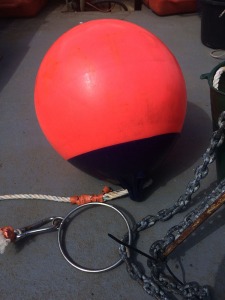
The Basics
To anchor a boat successfully you need to have plenty of rope and particularly plenty of chain. The anchor rope needs to be at least three times the depth of water you intend anchoring. The chain, as a rule of thumb, should be three times the length of the boat. More importantly it should weigh more than your anchor for the Alderney ring to work properly. The reason it should be heavier than the anchor comes when the anchor is lifted, as it works as a counter balance to the anchor and stops it from sliding back through the ring to the bottom again.
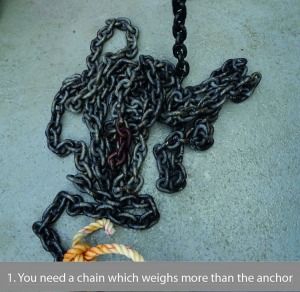
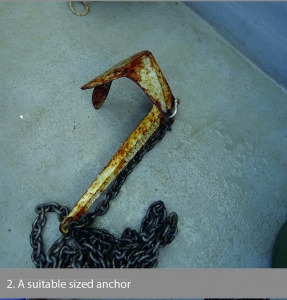
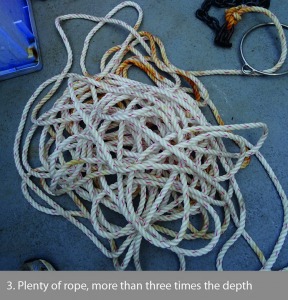
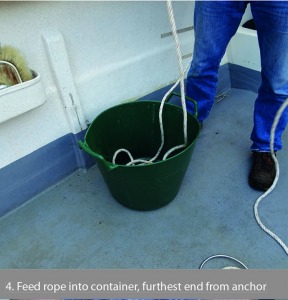
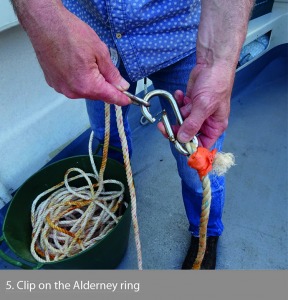
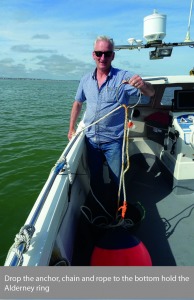
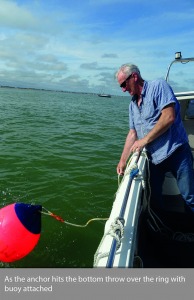
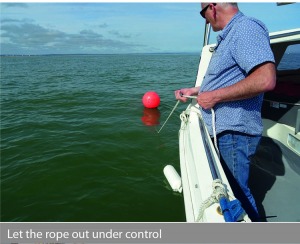
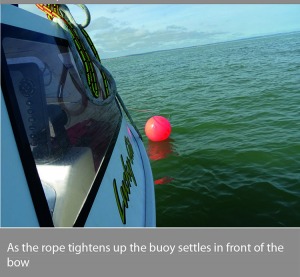
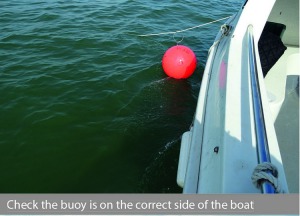
The Ring
At some time before you go afloat the Alderney ring should be slid onto the anchor rope. This may mean removing the anchor first. The buoy that will do all the work will be fitted with a short piece of stout rope and a shackle and spring clip. This is to clip it onto the ring when the anchor is dropped over the side. Some people prefer to only clip this onto the rope when the anchor is about to be lifted, but this can prove difficult in a strong wind, spring tide or heavy sea. The better option is to do it as the anchor hits the bottom, clip on the buoy and start feeding out the rope until it tightens up to the cleat on the bow. The buoy also shows you exactly where the rope is after the anchor is dropped, avoiding getting the rope round the propeller before the rope tightens up.
Dropping the anchor
- You need plenty of chain, at least three times the boat length
- A suitable sized anchor
- Anchor rope of more than three times the depth to be anchored
- Secure the rope at the bow then feed the rope back into the deck area and load into container
- Clip the buoy onto the Alderney ring, load the chain, anchor and buoy
and you are ready to go
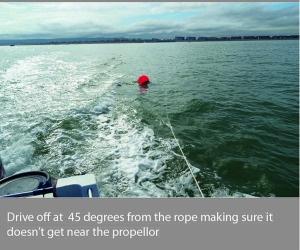
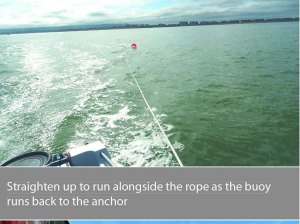
SAFETY
The anchor is worked from inside the deck area of the boat with no need to clamber up to the bow, which in a small boat can be hazardous. Work out what will be the deepest water you will be fishing in and pull out enough rope from the forward locker. Secure the rope to the cleat on the bow and bring the rope chain and anchor round the side of the cabin and into the deck area. Feed the rope into a large bucket, box or suitable container, starting from the far end to the anchor, this will put all the rope you will be using at the bottom of the container with the chain next and the anchor on top ready for dropping over the side.
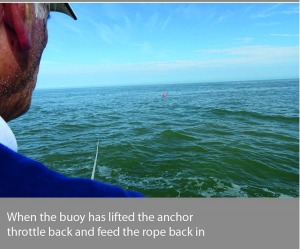
Dropping the anchor
First find the spot you want to fish using the sonar, then steam up tide a couple of hundred yards, put the boat into neutral with the bow into the tide and drop the anchor over the side, hold onto the ring and let the rope slide through feeding line out steadily. Once the anchor hits the bottom, clip the buoy on to the Alderney ring and continue letting out the rest of the rope until it tightens up to the cleat on the bow. Get your partner or crew to watch that the rope doesn’t get near the propeller while the rope is feeding out, otherwise it is pretty straight forward.
- Drop anchor to the bottom
and hold the ring
- Then let the rope out under control
- The rope will tighten as the boat runs back in the tide
- When the anchor grips the buoy will settle just in front of the bow
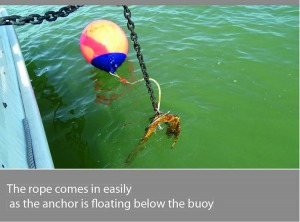
RETRIEVING THE ANCHOR
If you have never used this system before, try it out in a flat sea. Confidence will grow every time you try it. After clearing the side of the boat that the anchor is going to be retrieved, start the engine and steer forward at 25 degrees from the anchor rope. Once again get your partner to watch that the buoy comes down the correct side of the boat and doesn’t get trapped underneath the hull. As you pass the buoy straighten up and run parallel to the rope. The buoy will slide back down the rope until it is over the anchor. A little more throttle and the buoy will force the anchor up, as you continue going forward the buoy will slide back to the anchor and if the chain is the right weight it will then float under the buoy. Throttle back, turn side on to the buoy, put engine in neutral and feed the rope back into the anchor box and lift buoy and anchor into the boat.
1a. Before you move forward check the buoy is on the right side
2a. Steer at 45 degrees from the rope
3a. The buoy slides back down the rope
4a. Give a bit more throttle to lift the anchor and slide the buoy down to it
5a. The rope comes in easily as the anchor will float under the buoy
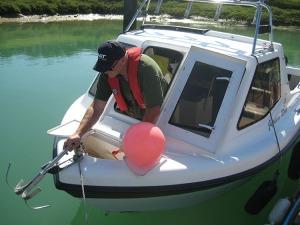
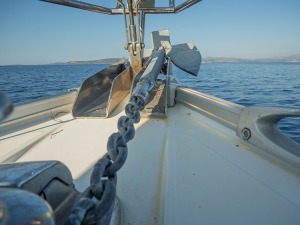
Watch Out
With practice, it really is that easy but there are a few things to watch out for. If the wind is blowing side on to the boat it can push the boat over the rope. This will mean making sure the buoy is on the right side of the boat before you move forward and a little more throttle may be needed to keep the boat on the right side of the rope. When feeding the rope back in with the engine in neutral, the breeze can push the boat towards the rope, especially if it’s a floating rope. By being aware and keeping a close watch on the rope at all times trouble can be avoided.
If you enjoyed this article you can buy the issue or subscribe by clicking the links below:
Buy digital copies - £2.99 each Subscribe Now Digital Subscription Click here for 12 Months of digital issues for £19.99
